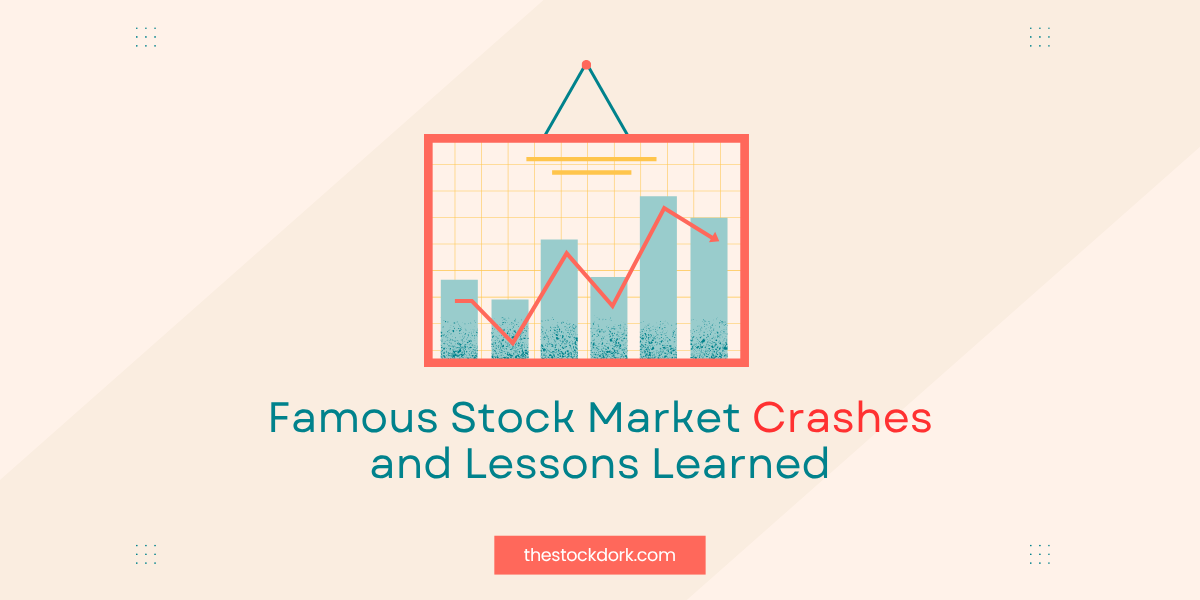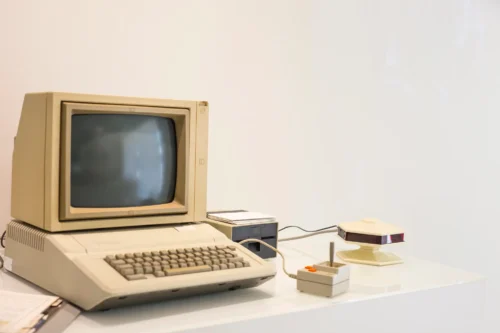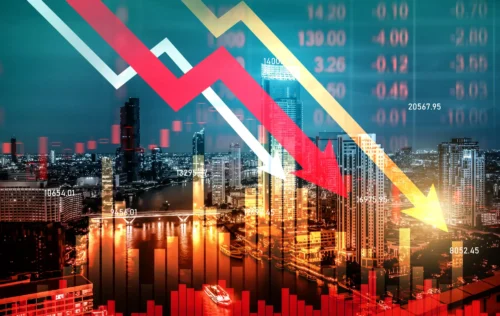If you invest long enough, you will see turbulence. Prices will swing, headlines will worry you, and your account balance may look messy for a while.
While those changes are normal, occasionally the worst does happen, and the market crashes.
Studying the history of stock market crashes gives you context, which lowers fear. It shows how markets fall, why they recover, and what smart investors do in between.
This guide walks through famous stock market crashes, how they started, and what ordinary investors, like you, can learn.
A Simple Map for What Follows
Let’s first look at the most notable crashes of all time before fast-forwarding to more recent events: Along the way, we will connect the dots, so you see the recurring patterns that drive both panic and recovery.
1929, When Confidence Cracked
The Wall Street Crash of 1929 is the landmark many people think of first. In the late 1920s, optimism was everywhere. Spirits were high, and people bought shares with borrowed money.. All that leverage worked great for a time, but made losses feel louder, too.
When prices started to slip, lenders called in loans. Investors sold to raise cash, which pushed prices down further, which forced more selling. That spiral turned a downturn into one of the biggest stock market crashes in modern memory. The economy struggled for years, and families felt the impact far from Wall Street.
People learned the hard way just how risky it was to own stocks, especially when prices are already stretched. The market crash and ensuing Great Depression led to new oversightnd valuable lessons about patience and diversification.
1987, the Day Computers Moved Faster Than People
On Black Monday, 1987, the Dow fell more than 22 percent. For many, it felt unreal. New computer-driven strategies were designed to limit losses, but when prices dipped, many programs sold at the same time. That rush overwhelmed the market, and fear spread across the globe.
It was a shock, but the market recovered within a couple of years. The key takeaway for beginners is simple. Technology can speed up both good and bad days. That is why guardrails, like trading pauses, exist. It is also why staying calm matters. Selling in a hurry often locks in regret.
The flood of liquidity was simply too much for the market to handle, and many people sadly paid the price.
2000 to 2002, When the Internet Dream Met the Calculator
The late 1990s created a powerful story. Websites felt new and world-changing. Startups with catchy names soared even if profits were years away. Little did we know that was the dot-com bubble, and it ended with a long slide that cut the Nasdaq by more than half. Many businesses never made it back.
This period is a clean example of a market bubble and crash. A bubble forms when excitement outruns real earnings and cash flow, followed by a burst when investors start looking for the logic behind the hype.. When the answers disappoint, prices reset.
Stock growth is wonderful, but inflated prices without any backing can lead to some serious consequences. Quality companies with clear paths to profit can be boring in the short run, but they are the ones you want to hold through trouble.
2008 to 2009, a Credit Problem That Touched Everyone
The 2008 stock market crash was different because it started in the plumbing of the system. Banks made too many risky home loans, then packaged those loans into complex securities. When payments failed, trust evaporated. Lending slowed, businesses cut back, and the stock market fell hard.
Several major banks at the time, including the Lehman Brothers, failed so significantly that there was no turning back. They shut their doors for good, and other banks took notice.
Fortunately, Broad U.S. indexes worked their way back over a few years, though the path was uneven, and some sectors healed faster than others. It was a difficult time, but it came with clear lessons.
The lesson here is that debt can magnify hidden risks. Diversifying across sectors can limit the damage from a single theme, like housing finance. Clear information and strong capital at banks help everyone, not just professionals.
May 2010, a Lightning Strike in a Sunny Sky
The flash crash of 2010 was a brief but intense drop. In minutes, prices fell sharply, then bounced back. The cause was a mix of fast trading, thin liquidity, and automated feedback loops. For newcomers, this is a reminder that short-term volatility can be noisy and confusing, yet not always a sign of deep damage.
If you hold a solid portfolio, a quick swing like this does not require a quick reaction. Many without a plan panicked in those crucial moments, a reminder to stay calm and keep emotion out of investing as much as possible.
Early 2020, Fear Raced Faster Than the Virus
The COVID-19 stock market crash of 2020 was startling for its speed. As lockdowns spread, so did uncertainty. Stocks fell more than 30 percent in a matter of weeks, which was frightening to watch, and many felt pressure to sell and stop the pain.
Unlike the previous crashes, something hopeful happened to right the downturn. Massive health efforts, steady central bank support, and fiscal help arrived, helping markets to recover within months.
No one should minimize the human cost of the pandemic, yet for investors, this chapter teaches a timeless point. Recoveries often begin when the news still looks bleak. Panic selling during a stock market crash can turn a temporary drop into a permanent loss.
What Causes a Stock Market Crash, in Plain Language
A crash rarely has just one spark. Often, prices drift too far from business reality, which makes the system fragile. Leverage, which is borrowed money, can add pressure. A shock arrives, such as a policy surprise, a credit mistake, or a global event. Confidence breaks. Sellers rush to the exits at the same time, and the market falls.
The biggest failure here is watching clear thought go out the window. People get caught up in hype or following the crowd without ever knowing where they’re going. Those stopping to assess the situation often come out on top, and there are plenty of instances where folks have actually made money even in these dark times.
How Long Recovery Can Take
Stock market crash recovery time depends on the cause. A quick technical issue, like the flash crash, can fix itself in minutes. A credit crunch, like 2008, can take years. A sudden shock, like 2020, can heal faster if the underlying economy is sound and policy support is strong. No one can time this perfectly. What you can do is plan for different speeds, so you do not need to guess.
Lessons From Stock Market Crashes You Can Actually Use
Of the best lessons we can learn from crashes, the first is emotional. Fear peaks near bottoms, and euphoria peaks near tops. Recognize the feeling, then return to your plan.
Next, consider your portfolio structure. Diversification spreads risk across different parts of the market, so one theme cannot sink your entire portfolio. It’s a safeguard you never want to have to use, but essential to have nonetheless.
Also, never invest more than you can afford to lose. A small cash cushion helps you avoid forced selling and gives you flexibility to buy when prices are attractive. This is the quiet edge that long-term investors use.
Finally, your goals matter more than the news cycle. Retirement in twenty years will not be decided by what happens this month. Tie your investing choices to time horizons you can live with, and the noise gets quieter.
How To Protect Your Portfolio During a Stock Market Crash
There’s no exact science to protecting your assets from a stock market crash, but following these steps can immensely help.
Match your stock exposure to your real risk tolerance, so you can sleep at night. Use broad index funds so that no single company can derail your plan. Rebalance on a schedule, not on a headline. Keep a modest emergency fund, so market dips do not become life dips.
Why Markets Recover, and Why That Matters to You
New products get built, companies adapt, and people keep solving problems. That is why markets have a recovery engine. It may not follow a set schedule, but it’s faithfully rebounded every time.. If you stay invested through downturns, you participate in that progress. If you sell in a panic, you step off the train and watch it leave without you.
This is not a promise of easy gains. It is a reminder that ownership of productive businesses, held over time, has rewarded patient investors across generations. Falls happen, recoveries follow, and long horizons help.
Bringing It All Together, Gently and Clearly
There’s nothing enjoyable about a stock market crash, but even in our country’s worst economic days, there’s always been a light at the end of the tunnel. Having this knowledge of past crashes and why they occurred helps us today to make better financial decisions and prepare for any market circumstance.
If you remember only one thing, let it be this. Crashes test patience, not just portfolios. Your future self will thank you for staying diversified, keeping some cash, and ignoring the urge to react to every dip. The path to your goals is not a straight line. It is a steady walk through changing weather, and fortunately, you now know how to dress for the storm.




 Tags:
Tags:










